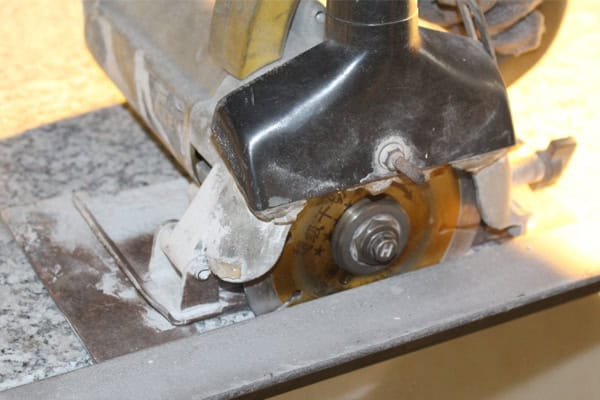
Choosing the right diamond blade can make all the difference in your cutting projects. Whether you’re a seasoned professional or a DIY enthusiast, understanding the options available is key to achieving the best results. I’ve spent countless hours experimenting with different blades, learning what works best in various scenarios, and I’m here to share those insights with you.
When it comes to diamond blades, segmented and turbo blades each have their unique advantages. Segmented blades offer precision and durability, making them ideal for heavy-duty tasks. On the other hand, turbo blades provide faster cutting speeds and are perfect for applications that require efficiency without compromising quality. Knowing which blade suits your specific needs can enhance your performance and project outcomes.
Let’s dive into the differences and help you make an informed choice.
What’s the Difference Between Segmented and Continuous Diamond Blades?
Choosing between segmented and continuous diamond blades can be confusing. Let me break it down for you.
Segmented diamond blades have spaces between the segments, allowing for better cooling and debris removal. This design makes them ideal for cutting through tough materials like concrete and stone. Continuous diamond blades, with their unbroken edge, offer smoother and faster cuts, perfect for materials that require a finer finish.
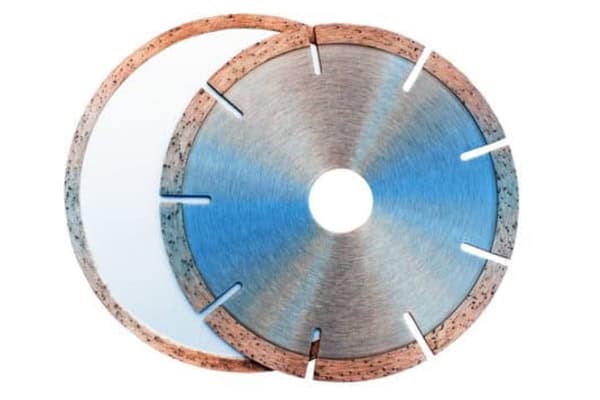
Understanding the Core Designs
At the heart of the difference between segmented and continuous diamond blades lies their core design. Segmented blades feature a series of gaps or segments along the edge, which serve multiple purposes. These gaps facilitate airflow, cooling the blade during intense cutting operations. They also allow debris to escape, preventing clogging and ensuring a consistent cutting performance.
Continuous diamond blades, in contrast, have a solid edge without any interruptions. This unbroken design ensures a smooth and steady cutting action, making them ideal for precision work. The continuous contact between the blade and the material results in cleaner cuts with minimal chipping or cracking.
Performance in Different Materials
Different materials demand different blade performances. Segmented blades excel in cutting dense and abrasive materials like concrete, brick, and stone1. Their design withstands the harsh conditions and heavy wear, ensuring longevity and reliability.
On the other hand, continuous blades shine when working with softer materials such as tiles, porcelain, and glass. The smooth edge minimizes the risk of damaging delicate surfaces, providing a polished finish that segmented blades might struggle to achieve.
Maintenance and Longevity
When it comes to maintenance, segmented blades tend to require more frequent checks due to their exposed segments. However, their robust construction often translates to a longer overall lifespan, especially in demanding applications.
Continuous blades, while offering smoother cuts, may wear down faster when used on hard, abrasive materials. Regular maintenance and proper handling can extend their lifespan, ensuring they remain effective for precise cutting tasks.
Cost Considerations
Cost is always a factor in choosing the right blade. Segmented blades might have a higher upfront cost due to their durable design, but their longevity can make them a more economical choice in the long run for heavy-duty applications.
Continuous blades are generally more affordable initially, making them a great option for projects that require precise cuts without the need for extensive durability. However, for repetitive or large-scale tasks, the quicker wear rate might necessitate more frequent replacements, impacting overall costs.
Example Scenario:
Imagine you’re working on a large construction site, cutting through thick concrete slabs. A segmented blade not only makes the job easier by cutting through tough material effortlessly but also stays cooler, preventing unnecessary wear and tear. Conversely, if you’re installing ceramic tiles in a home renovation, a continuous blade would provide the clean, precise cuts needed for a professional finish.
| Característica | Lâmina segmentada | Continuous Blade |
|---|---|---|
| Velocidade de corte | Moderate | High |
| Resfriamento | Excellent | Good |
| Debris Removal | Superior | Limited |
| Best For | Heavy-duty, rough cuts | Fine, smooth cuts |
Como funcionam as lâminas de diamante?
Understanding how diamond blades function can help you choose the right one for your needs.
Diamond blades are designed with industrial diamonds embedded in their edges. These diamonds grind through materials, making the cutting process efficient and precise. The type of blade—segmented or continuous—determines how the diamonds interact with the material, affecting speed, quality, and blade longevity.
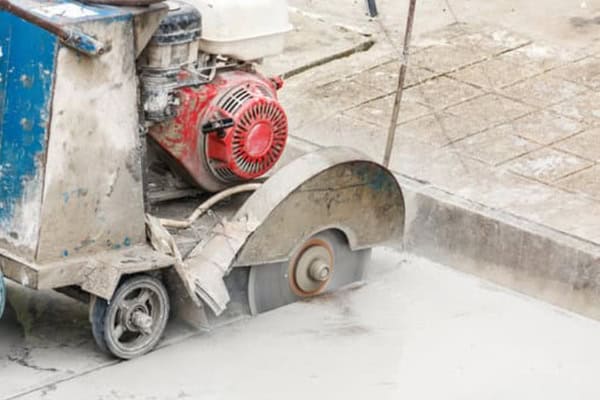
The Science Behind Diamond Blades
At the heart of every diamond blade is the diamond segment. These industrial diamonds are bonded to a metal base, creating a strong and durable cutting edge. When the blade spins, the diamonds grind away the material, providing a clean and efficient cut.
Wet vs. Dry Cutting:
- Wet Cutting: Uses water to cool the blade and reduce dust. Ideal for materials that generate a lot of heat.
- Dry Cutting: Doesn’t use water, making it quicker and more convenient for on-the-go projects. Best for materials that don’t produce excessive heat.
The Role of Industrial Diamonds
Industrial diamonds are not just any diamonds; they are carefully selected for their hardness and durability2. These diamonds are set in a matrix that holds them firmly in place, ensuring they maintain their cutting ability over extended periods. The concentration and size of the diamonds in the blade influence its cutting performance and lifespan.
Heat Management and Blade Integrity
Heat is a major factor in cutting performance and blade longevity. Excessive heat can cause the blade to warp or degrade, reducing its effectiveness. This is where the design of the blade—segmented or continuous—plays a crucial role. Segmented blades, with their built-in cooling mechanisms, help manage heat more effectively, ensuring the blade remains intact and performs optimally.
Debris Removal Mechanisms
Efficient debris removal is essential for maintaining cutting performance and preventing blade clogging. Segmented blades excel in this area with their gaps that allow debris to escape easily. Continuous blades, while providing smoother cuts, may require additional mechanisms or techniques to manage debris, especially when working with harder materials.
Personal Insight:
I remember the first time I switched from a standard blade to a diamond blade. The difference was night and day—cuts were cleaner, and the blade lasted much longer. It was a game-changer for my projects, saving time and money in the long run. The smoothness of the cuts and the reduced need for frequent blade changes made my work much more efficient and enjoyable.
Applications of Diamond Blades
Diamond blades are versatile tools used in various industries, including construction, manufacturing, and even art. Their ability to cut through a wide range of materials with precision makes them indispensable for professionals and hobbyists alike.
- Construction: Cutting concrete, asphalt, and masonry with ease.
- Manufacturing: Precision cutting of tile, marble, and ceramics.
Innovations in Diamond Blade Technology
The technology behind diamond blades is continually evolving. Manufacturers are constantly researching and developing new methods to enhance blade performance, durability, and safety. Innovations such as improved bonding techniques, advanced cooling systems, and enhanced diamond segmentation patterns are pushing the boundaries of what’s possible with diamond blades.
| Aspect | Lâmina segmentada | Continuous Blade |
|---|---|---|
| Diamond Density | Moderate | High |
| Tipo de Título | Softer bonds for faster wear | Harder bonds for longer wear |
| Optimal Use | High-load, rough cutting | Precision, smooth cutting |
| Maintenance | Regular cleaning required | Minimal cleaning needed |
How to Choose the Right Diamond Blade for Your Application?
Selecting the perfect diamond blade depends on your specific needs and the materials you’re working with.
Consider the type of material you’ll be cutting, the required precision, and the cutting environment. For heavy-duty tasks, a segmented blade is your best bet. If you need smooth, precise cuts, especially on harder materials, a continuous blade will serve you well. Always match the blade type to your project to ensure efficiency and longevity.
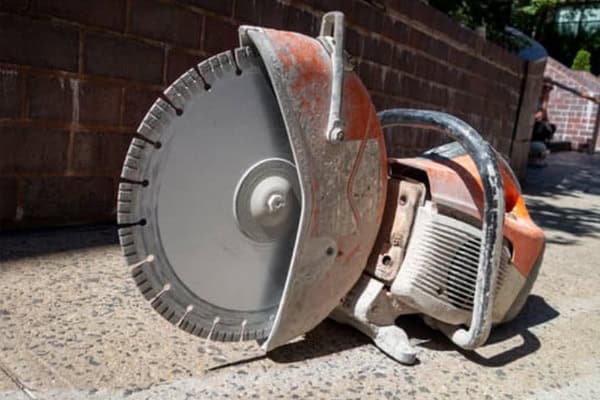
Assessing Your Project Requirements
Before selecting a diamond blade, it’s crucial to assess the specific requirements of your project. Ask yourself the following questions:
- What material am I cutting?
- What is the desired finish quality?
- How thick is the material?
- Will the cutting be done wet or dry?
- What is my budget for the blade?
Material Compatibility
Different diamond blades are engineered to handle specific materials. Here’s a quick guide to help you match the blade with the material:
- Concrete and Masonry: Segmented diamond blades are ideal.
- Tile and Porcelain: Continuous diamond blades provide the smoothest cuts.
- Stone and Granite: Continuous or turbo blades work best, depending on the desired finish.
Precision vs. Speed
Decide whether precision or speed is more important for your project. Continuous blades offer higher cutting speeds and smoother finishes, making them perfect for tasks where time and precision are critical. Segmented blades, while slightly slower, provide the power and durability needed for tougher materials and more demanding cutting tasks.
Cutting Environment
Your cutting environment can significantly influence your blade choice. If you’re working in a setting where water can be easily supplied, a wet cutting blade might be more efficient. Wet cutting reduces heat3 and dust, enhancing safety and blade longevity. However, if water supply is limited or impractical, opting for a dry cutting blade would be more suitable.
Blade Size and Compatibility
Ensure that the blade size matches your cutting equipment. Using the wrong size can lead to poor performance, increased wear, or even safety hazards. Always check the specifications of both your saw and the blade to ensure compatibility.
Budget Considerations
While high-quality diamond blades can be an investment, they often provide better performance and longer lifespans, making them more cost-effective in the long run. Consider the frequency of use and the demands of your projects when balancing quality and cost.
Example Decision:
If you’re cutting through reinforced concrete in a humid environment, a segmented blade with wet cutting capabilities would be ideal. It handles the tough material efficiently while keeping the blade cool and reducing dust.
| Inscrição | Recommended Blade | Método de corte |
|---|---|---|
| Concrete Slabs | Lâmina de Diamante Segmentada | Wet |
| Granite Countertops | Continuous Diamond Blade | Dry |
| Asphalt Roads | Turbo Diamond Blade | Wet/Dry |
| Tile Installation | Continuous Diamond Blade | Wet |
Matching Blade Features to Needs
Different blades come with various features tailored to specific needs. Here are some features to consider:
- Segment Height: Higher segments improve cooling and debris removal but may reduce cutting precision.
- Diamond Grit Size: Finer grit sizes provide smoother cuts, while coarser grits cut faster.
Longevity and Replacement
Understanding the lifespan of your diamond blade is essential for project planning and budgeting. Regular maintenance, such as cleaning and proper storage, can extend the blade’s life. However, be prepared to replace blades that show signs of significant wear, such as visible diamond loss or excessive dullness.
Safety Considerations
Safety should always be a priority when selecting and using diamond blades. Ensure that the blade is suitable for your specific cutting task and that your equipment is in good condition. Always wear appropriate protective gear and follow the manufacturer’s safety guidelines to prevent accidents and injuries.
Personal Insight:
Choosing the right blade wasn’t always straightforward for me. Early in my career, I often found myself switching blades mid-project, wasting time and resources. Over time, I learned to assess my needs more carefully, leading to smoother operations and better results. It’s all about understanding the tools you’re working with and how they fit into your workflow.
Frequently Asked Questions
Q: Can I use a segmented blade for fine tile work?
A: While it’s possible, segmented blades are not ideal for fine tile work as they may produce rougher edges. Continuous blades are better suited for achieving smooth, precise cuts on tiles.
Q: How often should I replace my diamond blade?
A: Replacement frequency depends on usage and the materials being cut. Regular inspection for wear and performance issues is essential. Signs like visible diamond loss or decreased cutting efficiency indicate it’s time for a replacement.
Q: Is wet cutting always better than dry cutting?
A: Not always. Wet cutting is excellent for reducing heat and dust, making it ideal for tough materials and indoor environments. However, it requires a water supply and may not be practical for all projects. Dry cutting offers convenience and speed for smaller or less demanding tasks.
What Are the Benefits of Wet vs. Dry Cutting with Diamond Blades?
Choosing between wet and dry cutting can impact your project’s efficiency and blade longevity.
Wet cutting uses water to cool the blade and minimize dust, making it safer and extending the blade’s life. Dry cutting is more convenient and quicker, ideal for smaller projects or areas where water use is impractical. Each method has its advantages, so consider your project’s specific needs when deciding which to use.
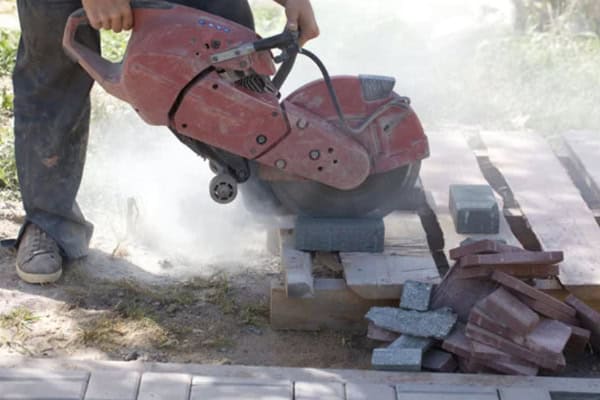
Advantages of Wet Cutting
Wet cutting offers several benefits that can enhance both the safety and efficiency of your cutting tasks:
- Cooling Efficiency: Water helps dissipate the heat generated during cutting, preventing the blade from overheating and prolonging its lifespan.
- Dust Suppression: By controlling dust, wet cutting creates a cleaner work environment and reduces the risk of respiratory issues.
- Improved Cutting Performance: Consistent cooling and reduced dust allow for smoother and more precise cuts, especially in hard materials.
- Extended Blade Life: Proper cooling and debris removal minimize wear and tear, making the blade last longer and maintaining cutting efficiency.
Advantages of Dry Cutting
Dry cutting is favored for its convenience and speed, particularly in scenarios where wet cutting may not be feasible:
- Portability: Without the need for a water supply, dry cutting is more portable and can be performed in remote locations or areas without easy access to water.
- Faster Setup: Dry cutting requires less setup time, allowing you to start your project more quickly.
- Versatility: Suitable for a wider range of materials and environments, dry cutting can adapt to various project needs without the constraints of water availability.
- Ease of Use: Without the need to manage water flow, dry cutting can be simpler and more straightforward, especially for small or occasional projects.
Environmental and Safety Considerations
Both wet and dry cutting come with their own set of environmental and safety considerations. Wet cutting reduces airborne dust, which is beneficial for both the environment and personal health. However, it requires careful management of water runoff and potential disposal issues.
Dry cutting, while generating more dust, avoids the complexities of water management. To mitigate dust-related hazards, proper ventilation4 and protective equipment are essential.
Cost Implications
Wet cutting might involve additional costs related to water supply systems and potential water treatment or disposal. On the other hand, dry cutting can save on these aspects but might incur higher costs related to dust control measures and more frequent blade replacements.
Practical Applications
Understanding when to use each cutting method can significantly enhance your project outcomes:
-
Wet Cutting Applications:
- Large-scale construction projects
- Cutting thick concrete or stone
- Indoor projects where dust control is crucial
-
Dry Cutting Applications:
- Quick, small-scale tasks
- Remote locations without water access
- Projects requiring high mobility and flexibility
Personal Story:
Once, I was working on a rooftop project where bringing water was a hassle. Switching to dry cutting made the job easier and faster, even though I had to manage the dust better. It taught me the importance of choosing the right cutting method for each situation. Sometimes, the convenience of dry cutting outweighs the benefits of wet cutting, especially when time and resources are limited.
Maintenance and Cleanup
Wet cutting often results in a cleaner work area with less airborne dust, but it does require managing water runoff and cleaning the worksite afterward. Dry cutting, while quicker, demands more effort in dust cleanup and ensuring that dust doesn’t accumulate in the workspace.
Blade Performance and Longevity
The cutting method directly affects blade performance and longevity. Wet cutting enhances blade performance by keeping it cool and free from excessive debris, allowing for smoother cuts and reducing wear. Dry cutting, while more convenient, can lead to faster blade wear if not managed properly, as the absence of water allows heat and dust to accumulate on the blade.
Health and Safety Measures
Regardless of the cutting method, safety should always be a priority. For wet cutting, ensure proper handling of water to prevent slips and manage runoff responsibly. For dry cutting, invest in quality dust masks, protective eyewear, and ensure adequate ventilation to protect against inhaling harmful dust particles.
| Método de corte | Pros | Cons |
|---|---|---|
| Wet | Cools the blade, reduces dust | Needs water, setup complexity |
| Dry | Quick, no water needed, easy cleanup | More dust, faster blade wear |
Environmental Impact
Wet cutting can have a more significant environmental impact due to water usage and potential runoff, which may contain harmful particles from the cutting process. Dry cutting, while generating dust, generally uses less water and can be managed with appropriate dust control measures to minimize environmental footprint.
Choosing the Right Method for Your Project
Ultimately, the choice between wet and dry cutting hinges on the specific requirements of your project. Assess the materials, environment, and desired outcomes to determine which method aligns best with your needs. Sometimes, having the flexibility to switch between methods based on project phases or conditions can provide the best of both worlds.
Segmented Versus Continuous Diamond Blades
Understanding the nuances between segmented and continuous diamond blades can help you make informed decisions for your cutting needs.
Segmented blades excel in heavy-duty, rough cutting tasks due to their robust design and efficient cooling systems. Continuous blades, meanwhile, offer superior precision and smoothness, making them ideal for detailed and fine cutting applications.
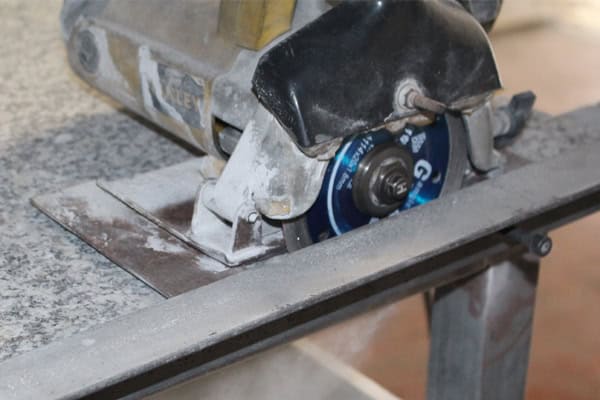
Detailed Comparison of Blade Structures
Segmented blades are characterized by their segmented edge, which features gaps or spaces between the segments. This design allows for increased airflow, which helps cool the blade and remove debris effectively. The segmented structure is particularly beneficial when cutting through abrasive materials, as it reduces the risk of blade overheating and maintains cutting efficiency over extended periods.
Continuous blades5, on the other hand, have an uninterrupted edge with diamonds uniformly distributed along the entire circumference. This continuous edge ensures a consistent cutting action, providing a smoother and more precise cut. The lack of gaps means continuous blades are less effective at cooling and debris removal, making them better suited for materials that require high precision rather than heavy-duty cutting.
Performance Metrics
When evaluating segmented versus continuous diamond blades, several performance metrics come into play:
- Cutting Speed: Continuous blades generally offer higher cutting speeds due to their uninterrupted edge, making them suitable for projects where time is a critical factor.
- Cut Quality: Continuous blades produce cleaner and smoother cuts, which is essential for applications where the finish quality is paramount.
- Blade Longevity: Segmented blades tend to have longer lifespans in heavy-duty applications due to their efficient cooling and debris removal systems.
- Versatility: Segmented blades are more versatile in handling a variety of tough materials, while continuous blades are specialized for precision work.
Real-World Applications
Understanding how each blade performs in real-world scenarios can provide deeper insights into their suitability for different tasks:
-
Segmented Blades:
- Construction Sites: Cutting through concrete slabs, asphalt roads, and masonry with ease.
- Demolition Projects: Efficiently breaking down large structures made of dense materials.
- Heavy Machinery Maintenance: Performing maintenance on equipment that involves cutting through tough materials.
-
Continuous Blades:
- Tile Installation: Achieving precise cuts for ceramic and porcelain tiles without chipping.
- Stone Sculpting: Creating intricate designs and smooth finishes in stone artwork.
- Metal Fabrication: Cutting metal sheets and rods with high precision for manufacturing purposes.
Cost-Benefit Analysis
When choosing between segmented and continuous blades, it’s essential to consider not just the initial cost but also the long-term benefits:
-
Segmented Blades:
- Higher Initial Cost: Due to their robust design and advanced cooling features.
- Long-Term Savings: Reduced need for frequent blade replacements in heavy-duty applications.
- Increased Productivity: Efficient cutting allows for faster project completion.
-
Continuous Blades:
- Lower Initial Cost: Generally more affordable upfront.
- Higher Precision: Reduces the need for additional finishing work, saving time and resources.
- Specialized Use: Best suited for specific tasks where precision is more valuable than cutting speed.
User Experiences and Testimonials
Hearing from others who have used both types of blades can provide valuable perspectives:
John, a Construction Manager:
"I’ve been using segmented diamond blades for our concrete cutting projects for years. Their durability and efficiency have significantly improved our workflow, allowing us to complete jobs faster without compromising on quality."
Hiroshi, a Tile Installer:
"Switching to continuous diamond blades for tile installations has made a noticeable difference in the finish quality. The cuts are smoother, and there’s less risk of damaging the tiles during the process."
Innovations Enhancing Blade Performance
The diamond blade industry is continually evolving, with innovations aimed at improving performance, durability, and safety:
- Advanced Bonding Techniques: New methods of bonding diamonds to the blade enhance cutting efficiency and blade longevity.
- Improved Cooling Systems: Innovations in blade design allow for better heat dissipation, reducing the risk of overheating during intense cutting tasks.
- Enhanced Material Composition: Using high-quality materials for blade construction ensures greater durability and performance across various applications.
- Smart Blades: Integration of sensors and smart technologies to monitor blade performance and predict maintenance needs.
Making the Right Choice
Ultimately, the decision between segmented and continuous diamond blades should be based on a thorough understanding of your project’s requirements, budget, and desired outcomes. By considering the factors discussed above, you can make an informed choice that enhances your productivity and ensures high-quality results.
Personal Insight:
There was a time when I underestimated the importance of choosing the right blade type for different projects. I recall a job where I used a continuous blade for a heavy-duty concrete cut, only to experience excessive wear and poor performance. That experience taught me the value of matching the blade type to the task at hand, leading to more successful and efficient projects in the future.
Detailed Comparison Table
| Característica | Lâmina segmentada | Continuous Blade |
|---|---|---|
| Velocidade de corte | Moderate | High |
| Cut Quality | Rougher cuts, durable | Smooth, precise cuts |
| Resfriamento | Excellent | Good |
| Debris Removal | Superior | Limited |
| Blade Longevity | Long in heavy-duty tasks | Moderate, depends on use |
| Best For | Heavy-duty, rough cuts | Fine, smooth cuts |
| Initial Cost | Higher | Lower |
| Maintenance | Regular cleaning needed | Minimal cleaning needed |
| Typical Applications | Concrete, asphalt, masonry | Tile, porcelain, marble |
Your Guide in Understanding Diamond Saw Blade
Navigating the world of diamond saw blades can be overwhelming, but with the right knowledge, you can make choices that enhance your cutting projects. Let’s break down the essentials to help you understand diamond saw blades better.
Diamond saw blades come in various types, each designed for specific cutting tasks and materials. From segmented to continuous blades, understanding their differences, applications, and maintenance needs is crucial for optimal performance and longevity.
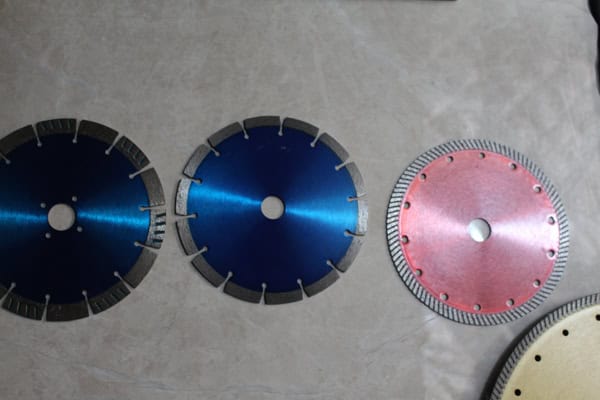
Tipos de lâminas de serra de diamante
Diamond saw blades are categorized based on their design, material compatibility, and cutting performance. Here are the primary types you should be familiar with:
- Segmented Diamond Blades: Ideal for heavy-duty cutting, these blades have gaps between the segments for efficient cooling and debris removal.
- Continuous Diamond Blades: Designed for precision cutting, these blades offer a smooth, uninterrupted edge for cleaner cuts.
- Turbo Diamond Blades: A hybrid between segmented and continuous blades, turbo blades provide a balance of speed and smoothness, making them versatile for various applications.
Material Compatibility
Choosing the right blade involves understanding the materials you’ll be cutting. Here’s a quick overview:
- Concrete and Masonry: Segmented blades are best suited for these tough materials, providing the power and durability needed for effective cutting.
- Tile and Porcelain: Continuous blades excel in providing smooth, precise cuts without chipping the delicate surfaces.
- Stone and Granite: Turbo or continuous blades are ideal, depending on whether you prioritize speed or precision.
- Asphalt: Segmented blades handle asphalt efficiently, ensuring clean cuts and extended blade life.
Choosing the Right Blade for Your Equipment
Ensuring that the blade size and type match your cutting equipment is essential for safety and performance. Here are some tips:
- Check Compatibility: Always verify that the blade’s diameter and arbor size match your saw specifications.
- Consider RPM Ratings: Ensure the blade can handle the rotational speed of your saw to prevent overheating or damage.
- Balance and Stability: Choose blades that offer good balance to reduce vibrations and ensure stable cutting performance.
Blade Maintenance Tips
Proper maintenance can significantly extend the life of your diamond blades and ensure consistent performance:
- Regular Cleaning: Remove debris and dust after each use to prevent buildup that can affect cutting efficiency.
- Inspect for Damage: Regularly check for signs of wear, such as missing diamonds or cracks in the blade.
- Proper Storage: Store blades in a dry, clean environment to prevent rusting and damage.
- Use Appropriate Cutting Techniques: Avoid applying excessive pressure or using the blade beyond its rated capacity, as this can lead to premature wear or failure.
Safety Precautions
Safety should always be a priority when working with diamond blades. Here are some essential precautions:
- Wear Protective Gear: Always use safety glasses, gloves, and appropriate clothing to protect against debris and accidents.
- Secure the Workpiece: Ensure the material you’re cutting is firmly secured to prevent movement during cutting.
- Use Guards and Shields: Utilize blade guards and shields provided by your equipment to protect yourself from flying debris.
- Follow Manufacturer Guidelines: Adhere to the safety instructions and guidelines provided by the blade manufacturer to ensure safe operation.
Troubleshooting Common Issues
Even with the right blade and proper maintenance, you might encounter some issues. Here are solutions to common problems:
- Blade Slippage: Ensure the blade is properly mounted and tightened to prevent slippage during cutting.
- Overheating: If the blade is overheating, check for adequate cooling and reduce the cutting speed if necessary.
- Poor Cut Quality: Inspect the blade for wear or damage and replace it if necessary. Also, ensure you’re using the correct blade type for the material.
- Frequent Clogging: For segmented blades, excessive debris can cause clogging. Ensure proper debris removal and consider using a blade with better debris management.
Personal Insight:
Understanding the intricacies of diamond saw blades has been a journey for me. Early on, I underestimated the importance of blade maintenance, leading to frequent replacements and project delays. Over time, adopting regular maintenance routines and selecting the right blade for each task transformed my workflow, making projects smoother and more efficient.
Frequently Asked Questions
Q: How do I know when it’s time to replace my diamond blade?
A: Look for signs such as visible wear or missing diamonds, reduced cutting efficiency, or unusual vibrations during cutting. Regular inspection can help determine when a replacement is necessary.
Q: Can I use the same blade for different materials?
A: While some blades are versatile, it’s generally best to use blades designed for specific materials to ensure optimal performance and longevity.
Q: What safety measures should I take when using a diamond blade?
A: Always wear protective gear, secure your workpiece, use guards and shields, and follow the manufacturer’s safety guidelines to prevent accidents and injuries.
Advanced Blade Features
Modern diamond blades come with various advanced features designed to enhance performance and safety:
- Diamond Concentration: Higher diamond concentration provides faster cutting speeds and longer blade life.
- Segment Bonding: Advanced bonding techniques ensure diamonds are securely held in place, enhancing durability and cutting efficiency.
- Self-Sharpening Segments: Some segmented blades feature self-sharpening segments that maintain cutting performance by exposing fresh diamonds as the blade wears.
- Vibration Dampening: Enhanced blade designs reduce vibrations, leading to smoother cuts and increased operator comfort.
- Noise Reduction: Innovative blade structures can minimize noise levels during cutting, creating a more comfortable working environment.
Making an Informed Decision
Choosing the right diamond blade involves balancing various factors, including material compatibility, project requirements, budget, and maintenance capabilities6. By thoroughly understanding these aspects, you can select a blade that not only meets but exceeds your cutting needs, ensuring successful and efficient project outcomes.
Personal Story:
There was a project where I needed to cut through both concrete and tile. Initially, I used a segmented blade for the concrete, which worked perfectly, but when switching to the tile, I noticed the cuts weren’t as clean as I wanted. Realizing the need for a continuous blade for the tile work, I made the switch, and the improvement was remarkable. This experience reinforced the importance of selecting the right blade type for each specific task.
Select Right Diamond Blade for Your Application
Selecting the perfect diamond blade depends on your specific needs and the materials you’re working with.
Consider the type of material you’ll be cutting, the required precision, and the cutting environment. For heavy-duty tasks, a segmented blade is your best bet. If you need smooth, precise cuts, especially on harder materials, a continuous blade will serve you well. Always match the blade type to your project to ensure efficiency and longevity.
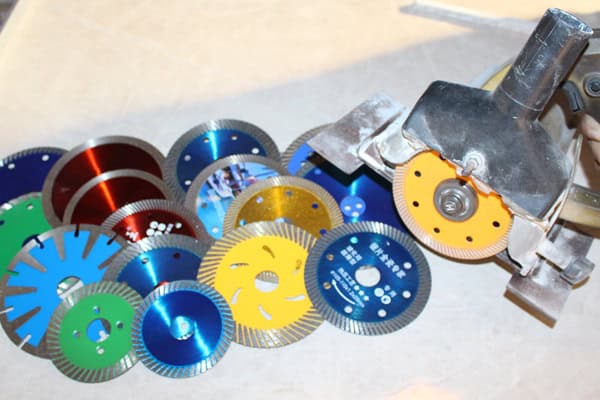
Evaluating Material Properties
Understanding the properties of the material you’re cutting is fundamental to selecting the right blade7. Different materials have varying hardness, density, and abrasiveness, all of which influence blade performance.
- Hardness: Materials like granite and concrete are harder and require blades with higher diamond concentration and robust bonding.
- Density: Dense materials generate more heat and require blades with excellent cooling capabilities, such as segmented blades.
- Abrasiveness: Highly abrasive materials wear down blades faster, necessitating blades designed for durability and quick diamond exposure.
Matching Blade Specifications to Cutting Requirements
To ensure optimal performance, align blade specifications with your cutting requirements:
- Blade Diameter: Ensure the blade size matches your saw to maintain balance and prevent wobbling.
- Arbor Hole Size: Verify that the arbor hole size is compatible with your equipment for safe operation.
- Segment Design: Choose a segmented design for enhanced cooling and debris removal in heavy-duty tasks.
- Diamond Grit Size: Select a finer grit for smoother cuts and a coarser grit for faster cutting speeds.
Environmental and Site Considerations
The environment where you’ll be cutting can influence your blade choice:
- Indoor vs. Outdoor: Indoor projects may benefit from dry cutting blades to avoid water usage, while outdoor projects might leverage wet cutting for better cooling.
- Weather Conditions: In humid or wet conditions, segmented blades with wet cutting capabilities are ideal. In dry, arid environments, continuous blades offer the convenience needed for quick projects.
- Workspace Constraints: Limited space may require compact blades that offer high precision without extensive cooling systems.
Budget and Cost Efficiency
Balancing quality and cost is essential for project budgeting:
- Initial Investment vs. Long-Term Savings: Higher-quality blades may have a higher upfront cost but offer better performance and longer lifespans, leading to overall cost savings.
- Project Scale: For large-scale projects, investing in durable blades like segmented or turbo blades can reduce replacement frequency and maintenance costs.
- Frequency of Use: High-frequency users benefit from blades designed for longevity, while occasional users might prioritize affordability without compromising essential features.
Practical Selection Guide
Here’s a step-by-step guide to help you select the right diamond blade:
- Identify the Material: Determine the exact material you’ll be cutting.
- Assess Cutting Requirements: Decide whether you need speed, precision, or durability.
- Consider the Cutting Environment: Evaluate whether wet or dry cutting is feasible.
- Check Blade Compatibility: Ensure the blade size and arbor hole match your saw.
- Evaluate Budget Constraints: Balance the cost against the expected blade performance and lifespan.
- Review Advanced Features: Look for features that enhance performance, such as self-sharpening segments or vibration dampening.
Case Studies
Case Study 1: Commercial Tile Installation
A professional tile installer needed precise cuts for large porcelain tiles. By selecting continuous diamond blades, the installer achieved smooth, chip-free edges, enhancing the overall finish quality and customer satisfaction.
Case Study 2: Concrete Demolition
In a demolition project involving thick concrete slabs, segmented diamond blades were chosen for their durability and efficient cooling. The blades performed exceptionally well, cutting through the concrete with minimal wear and reducing project downtime.
Personal Insight:
Choosing the right blade has a direct impact on the success of your projects. Early in my career, I often faced challenges due to mismatched blade selections, leading to frustration and increased costs. Learning to evaluate each project’s unique requirements allowed me to select the most appropriate blades, resulting in smoother operations and better outcomes.
Comprehensive Selection Table
| Project Type | Material | Recommended Blade | Método de corte | Key Features to Look For |
|---|---|---|---|---|
| Tile Installation | Porcelain, Ceramic | Continuous/Turbo Diamond Blade | Wet | Smooth cut, chip-free edges |
| Concrete Cutting | Reinforced Concrete | Lâmina de Diamante Segmentada | Wet | High durability, efficient cooling |
| Asphalt Paving | Asfalto | Lâmina de Diamante Segmentada | Wet/Dry | Versatile cutting, balanced performance |
| Stone Sculpting | Granite, Marble | Lâmina de Diamante Segmentada | Dry | High precision, smooth finish |
Diamond Concrete Blades And Wet vs Dry Cutting
When it comes to concrete cutting, the choice between wet and dry cutting can significantly affect your results and blade longevity.
Diamond concrete blades are specifically designed to handle the tough, abrasive nature of concrete. Whether you choose wet or dry cutting methods, understanding the benefits and limitations of each approach is crucial for achieving optimal performance and maintaining blade integrity.
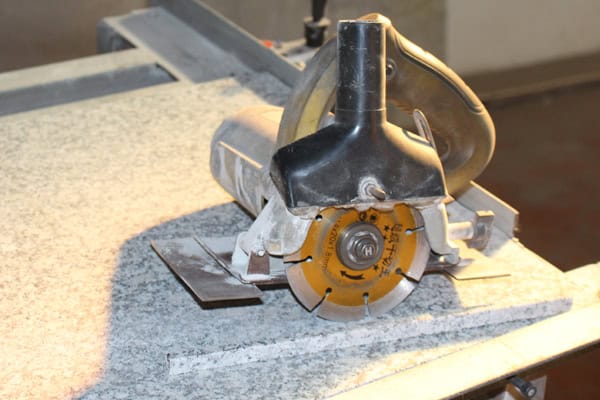
Understanding Diamond Concrete Blades
Diamond concrete blades are engineered to tackle the unique challenges posed by cutting concrete. These blades feature a high concentration of diamonds and robust bonding to withstand the abrasive nature of concrete surfaces.
- High Diamond Concentration: Ensures efficient cutting through dense materials like concrete.
- Robust Bonding: Maintains diamond placement under high stress and abrasive conditions.
- Segmented Design: Often preferred for concrete due to better cooling and debris removal.
Wet Cutting for Concrete
Wet cutting involves the use of water to cool the blade and minimize dust8 during the cutting process. This method is particularly effective for concrete due to several reasons:
- Heat Management: Concrete cutting generates significant heat, which can degrade the blade. Water cooling helps dissipate this heat, protecting the blade and extending its lifespan.
- Dust Control: Wet cutting significantly reduces the amount of airborne dust, creating a safer and cleaner work environment.
- Improved Cutting Efficiency: Consistent cooling and debris removal enhance cutting performance, allowing for smoother and faster cuts through concrete.
Dry Cutting for Concrete
Dry cutting, while not as efficient as wet cutting for concrete, offers certain advantages that may be beneficial in specific scenarios:
- Convenience: Eliminates the need for a water supply, making it easier to set up and use in remote locations or areas without easy access to water.
- Faster Setup: Reduces preparation time, allowing for quicker project initiation.
- Flexibility: Suitable for projects where water usage is impractical or restricted due to environmental regulations or site conditions.
Comparative Analysis
To help you decide between wet and dry cutting for concrete, here’s a comparative analysis of both methods:
| Aspect | Wet Cutting | Corte a Seco |
|---|---|---|
| Heat Management | Excellent cooling, prevents overheating | Limited cooling, higher risk of blade wear |
| Dust Control | Minimal dust, safer work environment | High dust levels, requires dust control measures |
| Cutting Efficiency | High, smooth and fast cuts | Moderate, slower and less smooth cuts |
| Setup Complexity | Requires water supply and setup | Simple, no water needed |
| Environmental Impact | Water runoff management needed | Less water usage, but more dust generation |
| Blade Longevity | Shorter blade life due to water constantly washes out new diamond grit | Longer blade life due to diamond grit is not easy to expose |
Choosing the Right Method for Your Concrete Project
When deciding between wet and dry cutting for concrete, consider the following factors:
- Project Location: Indoor vs. outdoor, availability of water supply.
- Environmental Regulations: Restrictions on water usage or dust generation.
- Project Scale: Large-scale projects may benefit more from wet cutting efficiency.
- Blade Longevity: Investing in dry cutting can save costs in the long run by extending blade life.
- Safety Considerations: Wet cutting offers a safer environment by reducing dust exposure.
Maintenance Tips for Concrete Cutting Blades
Regardless of the cutting method, proper maintenance is essential to ensure the longevity and performance of your diamond concrete blades:
- Regular Cleaning: Remove debris and concrete residue after each use to prevent buildup and maintain cutting efficiency.
- Blade Inspection: Frequently check for signs of wear, such as missing diamonds or cracks, and replace blades as needed.
- Proper Storage: Store blades in a dry, clean environment to prevent rusting and damage.
- Lubrication: For dry cutting, occasionally lubricate the blade to reduce friction and heat buildup.
- Balanced Cutting: Use even pressure and avoid forcing the blade through the material to prevent uneven wear and prolong blade life.
Enhancing Cutting Performance
Maximizing the performance of your diamond concrete blades involves more than just choosing the right cutting method. Here are some tips to enhance your cutting performance:
- Optimal Cutting Speed: Adjust your saw’s speed settings to match the blade and material for efficient cutting without overloading the blade.
- Consistent Pressure: Apply steady, even pressure to maintain a consistent cut and prevent blade wobbling or uneven wear.
- Proper Alignment: Ensure the blade is properly aligned and balanced on the saw to reduce vibrations and improve cutting accuracy.
- Use Quality Blades: Invest in high-quality diamond concrete blades from reputable manufacturers to ensure reliable performance and durability.
- Training and Technique: Proper training and cutting techniques can significantly impact cutting efficiency and blade lifespan. Familiarize yourself with best practices for both wet and dry cutting methods.
Frequently Asked Questions
Q: Is wet cutting always better for concrete?
A: While wet cutting offers superior cooling and dust control, making it ideal for concrete, it may not be practical for all projects due to water supply constraints. Assess your project’s specific needs to determine the best method.
Q: Can I switch between wet and dry cutting with the same blade?
A: Some blades are designed for both wet and dry cutting, but it’s essential to check the manufacturer’s guidelines. Using a blade for both methods can affect its performance and lifespan.
Q: How do I manage water runoff during wet cutting?
A: Use proper drainage systems to direct water runoff away from the work area. Consider using water containment measures to minimize environmental impact and comply with local regulations.
Innovations in Concrete Cutting Blades
The concrete cutting industry is witnessing several innovations aimed at improving efficiency, safety, and blade performance:
- Self-Sharpening Blades: Blades that automatically expose fresh diamonds as they wear, maintaining cutting performance without manual intervention.
- Improved Bonding Materials: Advanced bonding materials that enhance the durability and strength of the blade, allowing for longer use in demanding conditions.
- Integrated Cooling Channels: Blades with built-in cooling channels that optimize water flow and temperature management, improving cutting efficiency and blade longevity.
Environmental Considerations in Concrete Cutting
Sustainability is becoming increasingly important in construction practices, including concrete cutting. Here are some environmental considerations:
- Water Usage: Optimize water usage in wet cutting to minimize waste and reduce environmental impact.
- Dust Control: Implement effective dust control measures to prevent air pollution and protect worker health.
- Blade Recycling: Explore options for recycling used blades to reduce waste and promote sustainable practices.
- Energy Efficiency: Use energy-efficient cutting equipment and techniques to lower the overall environmental footprint of your projects.
Making the Right Choice for Your Concrete Projects
Selecting the right combination of blade type and cutting method can significantly enhance your concrete cutting projects. Consider the following steps to make an informed decision:
- Assess Material and Project Requirements: Understand the specific demands of your project, including material type, thickness, and desired finish.
- Evaluate Cutting Environment: Determine whether wet or dry cutting is more feasible based on the project location and environmental factors.
- Select the Appropriate Blade: Choose a blade that matches your material and cutting needs, considering factors like diamond concentration, bond strength, and blade design.
- Implement Proper Techniques: Adopt cutting techniques that maximize efficiency and blade longevity, such as optimal cutting speeds and consistent pressure.
- Maintain and Monitor Blades: Regularly inspect and maintain your blades to ensure they remain in optimal condition and replace them as needed to maintain cutting performance.
Conclusão
Choosing the right diamond blade can transform your cutting projects, ensuring efficiency and quality. Whether you opt for segmented or turbo blades, understanding their differences helps you make the best decision for your needs. Remember to consider the material, cutting environment, and specific project requirements to select the blade that will deliver the best results.
-
Offer more technical details on choosing the right tools, especially when working with tough materials like stone. ↩
-
This leads to a more detailed explanation of how diamond durability affects tool life and cutting efficiency in industrial applications. ↩
-
Heat can affect blade durability and performance, learn about the mechanisms of heat generation during cutting and how wet-cutting blades help reduce it. ↩
-
Proper ventilation is crucial when cutting materials that generate dust, especially in dry cutting. ↩
-
Explore why these blades are preferred for precision cuts, providing them with deeper insights into the ideal materials and tasks for this blade type. ↩
-
Provides valuable insights into how maintaining diamond blades properly can extend their life and maintain cutting efficiency. ↩
-
Offer detailed guidance on choosing the appropriate blade based on material characteristics, enhancing the ability to achieve optimal cutting results. ↩
-
Dust reduction is a key advantage of wet cutting, especially for health and safety reasons. Explain how water helps in controlling dust and creating a cleaner work environment. ↩